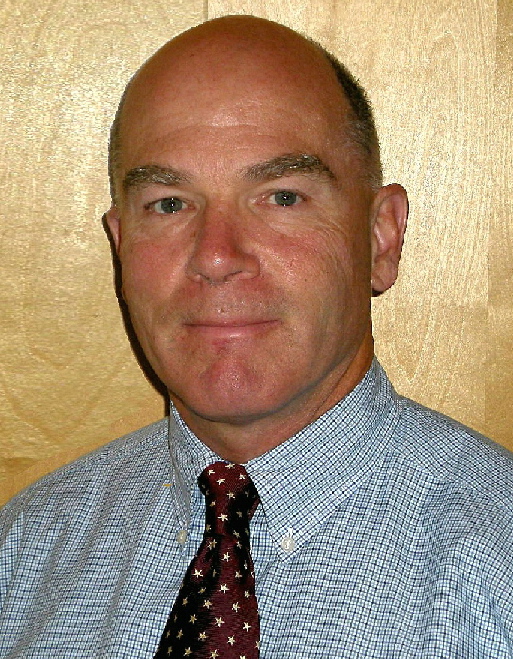Reflections 2011, Predictions 2012 - Part 2
 Monday, December 19, 2011 at 6:25PM
Monday, December 19, 2011 at 6:25PM Gazettabyte asked industry analysts, CEOs, executives and commentators to reflect on the last year and comment on developments they most anticipate for 2012. Here are the views of Verizon's Glenn Wellbrock, Professor Rod Tucker, Ciena's Joe Berthold, Opnext's Jon Anderson, NeoPhotonics' Tim Jenks and Vladimir Kozlov of LightCounting.
Glenn Wellbrock, Verizon's director of optical transport network architecture & design
The most significant accomplishment from an optical transport perspective for me was the introduction of 100 Gigabit into Verizon's domestic - US - network.

"The key technology enabler in 2012 will be the flexible grid optical switching that can support data rates beyond 100 Gigabit"
That accomplishment has paved the way for us to hit the ground running in 2012 with a very aggressive 100 Gigabit deployment plan. I also believe this accomplishment gives others the confidence to start taking advantage of this leading-edge technology.
With coherent receiver technology and the associated high-speed electronics lowering the propagation latency by up to 15%, we see a much cleaner line system design that eliminates external dispersion compensation fibre while bringing down the cost, space and power per bit.
The value of the whole industry moving in this direction means higher volumes and, therefore, lower costs. This new infrastructure will allow operators to get ahead of customer demand, thus improving delivery intervals and introducing new, higher bandwidth services to those large key customers that require it.
In my opinion, the key technology enabler in 2012 will be the flexible grid optical switching that can support data rates beyond 100 Gigabit and provides the framework to support colourless, directionless and contentionless optical nodes.
Today, field technicians must plug a new transmitter/ receiver into the appropriate direction and filter port at both circuit ends. With this new technology, operations personnel can simply plug the new card into the next available port and it can then be provisioned, tested and even moved to a new colour or direction remotely without any on-site personnel involvement - even when there are multiple copies of the same colour on the same add/ drop structure coming from different fibres.
This new nodal architecture takes advantage of the inherent channel selection capability of the coherent receiver to eliminate fixed filters and opens up the door for a truly reconfigurable optical add/ drop multiplexer (ROADM) - creating new flexibility that can be used for optical restoration, network defragmentation, operational simplicity, and more.
Rod Tucker, Director of the Institute for a Broadband Enabled Society (IBES), Director of the Centre for Energy-Efficient Telecommunications (CEET), and professor of electrical and electronic engineering at the University of Melbourne.
Australia's National Broadband Network (NBN) hit the ground running in 2011.
The project is still many years from completion, but in 2011 the roll-out of fibre-to-the-premises infrastructure began in earnest. This is a very noteworthy project - a wholesale broadband access network delivering advanced broadband services to the entire population of the country, including fibre to 93% of all premises and a mixture of fixed wireless and satellite to the remainder. At an estimated cost of around AUS$36 billion, the price tag is not small.

"The environment created by [Australia's] National Broadband Network will greatly enhance opportunities for innovations in new services and new modes of broadband service delivery"
But the wholesale-only model maximises opportunities for competition at the service provider level, and reduces wasteful duplication of infrastructure in the last mile. A remarkable aspect of the NBN project is that a deal has been struck between the incumbent telco, Telstra, and the government-owned owner of the NBN.
Under this deal, Telstra will shut down its Hybrid-Fibre-Coax (HFC) network and decommission its legacy copper access network. Australia will become a truly fibre-connected country, with a future-proof broadband infrastructure.
My thoughts for 2012 also relate to Australia's National Broadband Network. The environment created by the NBN will greatly enhance opportunities for innovations in new services and new modes of broadband service delivery.
I anticipate that in 2012 and beyond, new services providers and aggregators in areas such as health care, education, entertainment and energy will emerge.
I am very excited about the opportunities.
Joe Berthold, vice president of network architecture at Ciena
One of the most memorable developments from a network architecture point of view was the clear emergence of the category of packet-optical switching products to serve as the transport layer of backbone IP networks.
For years two competing points of view have been put forth. First, in the 'IP-over-glass' position, long-haul optics is incorporated into core routers. This has never taken off, with some disappointing attempts in the early days of 40 Gigabit. The second approach involves a separate, very much simpler, packet optical transport platform being introduced to interconnect core routers. The packet transport could be based on Ethernet protocols, MPLS, MPLS-TE or MPLS-TP.

"It will be interesting to see if a large internet data centre operator decides to embrace the OpenFlow concept at this very early stage of its development"
What is quite significant in this development, traditional router vendors seem to be going in this direction too, with the vision of a much simpler packet switching platform to keep cost, space and power under control.
This is a clear response to the overwhelming need we see in the market, representing a separation of packet switching into two layers: one with global routing capability at strategic locations in the network, and the other with flexible transport functionality for network traffic engineering.
In 2012 it will be fascinating to see how the struggle for protocol dominance plays out within the data centre.
While the IETF has many competing proposals, worked in multiple groups, the IEEE is in final ballot now for Shortest Path Bridging (IEEE 802.1aq).
Shortest Path Bridging has broad applicability in networks, but we might see it first emerge as a solution within the data centre.
The other contender within the data centre is OpenFlow, which has developed quite a momentum too.
It will be interesting to see if a large internet data centre operator decides to embrace the OpenFlow concept at this very early stage of its development.
Jon Anderson, director of technology programme at Opnext
Our most significant 2011 events were the Japan great earthquake in March and the Thailand floods in October. Both events caused major disruptions and challenges in optical component supply-chain management and manufacturing.
JDS Uniphase's tunable SFP+ announcement was well ahead of the technology curve.

"Our most significant 2011 events were the Japan great earthquake in March and the Thailand floods in October."
In 2012 we expect initial production shipments and deployment of 100Gbps PM-QPSK/ coherent modules. Also a fast production ramp of 40 Gigabit Ethernet (GbE) QSFP+ modules for data centre applications.
Another development to watch is the next-generation 100 GbE interconnect technology and standards development for low-cost, high-density modules for data centre applications.
Lastly, there will be an increased focus on technologies and solutions for 100 Gigabit DWDM in metro and extended reach enterprise applications.
Tim Jenks, CEO of NeoPhotonics

NeoPhotonics made significant progress this year in developments of components and technologies for coherent transmission networks, including receivers, transmitters and advanced approaches toward switching.
We continue to see increasing adoption of coherent transmission systems, broad-scale deployment of access networks and a continuing emergence of large scale data centres as a prominent element of the communications network landscape.
Vladimir Kozlov, CEO of LightCounting
The industry was strong enough to get over an earthquake, tsunami and flood in 2011. Softer demand for optics in 2011 helped - is still helping - many vendors to ride the disruptions. Ironically, the industry was more stressed ramping up production in 2010 to meet demand than dealing with the disruptions of 2011. We are looking forward to a smoother ride in 2012, as demand/ supply reach equilibrium and nature cooperates.
 "Ironically, the industry was more stressed ramping up production in 2010 to meet demand than dealing with the disruptions of 2011"
"Ironically, the industry was more stressed ramping up production in 2010 to meet demand than dealing with the disruptions of 2011"
Service provider revenue and capex were up significantly in 2011. Mobile data is driving the growth, but even wireline revenues are improving and FTTx is probably behind it. This should be a sustainable trend for 2012-2015, even as service providers curb expenses to improve profitability, a larger fraction of capex will be spend on equipment. New technology is critical to stay ahead of competition.
Data centre optics had another good year with 10GBASE-T falling further behind schedule and with 100 Gigabit generating much action. This will probably get even more interesting in 2012.
Our conservative forecast for active optical cable, criticised by some vendors, was not conservative enough in 2011. It will take a while for this segment to unfold.
For Part 1, click here
For Part 3, click here



Reader Comments